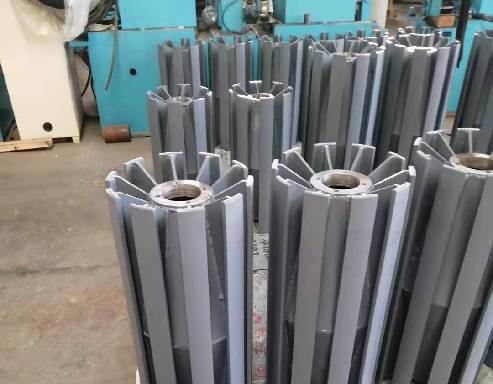 Afrikaans
Afrikaans  Albanian
Albanian  Amharic
Amharic  Arabic
Arabic  Armenian
Armenian  Azerbaijani
Azerbaijani  Basque
Basque  Belarusian
Belarusian  Bengali
Bengali  Bosnian
Bosnian  Bulgarian
Bulgarian  Catalan
Catalan  Cebuano
Cebuano  Corsican
Corsican  Croatian
Croatian  Czech
Czech  Danish
Danish  Dutch
Dutch  English
English  Esperanto
Esperanto  Estonian
Estonian  Finnish
Finnish  French
French  Frisian
Frisian  Galician
Galician  Georgian
Georgian  German
German  Greek
Greek  Gujarati
Gujarati  Haitian Creole
Haitian Creole  hausa
hausa  hawaiian
hawaiian  Hebrew
Hebrew  Hindi
Hindi  Miao
Miao  Hungarian
Hungarian  Icelandic
Icelandic  igbo
igbo  Indonesian
Indonesian  irish
irish  Italian
Italian  Japanese
Japanese  Javanese
Javanese  Kannada
Kannada  kazakh
kazakh  Khmer
Khmer  Rwandese
Rwandese  Korean
Korean  Kurdish
Kurdish  Kyrgyz
Kyrgyz  Lao
Lao  Latin
Latin  Latvian
Latvian  Lithuanian
Lithuanian  Luxembourgish
Luxembourgish  Macedonian
Macedonian  Malgashi
Malgashi  Malay
Malay  Malayalam
Malayalam  Maltese
Maltese  Maori
Maori  Marathi
Marathi  Mongolian
Mongolian  Myanmar
Myanmar  Nepali
Nepali  Norwegian
Norwegian  Norwegian
Norwegian  Occitan
Occitan  Pashto
Pashto  Persian
Persian  Polish
Polish  Portuguese
Portuguese  Punjabi
Punjabi  Romanian
Romanian  Russian
Russian  Samoan
Samoan  Scottish Gaelic
Scottish Gaelic  Serbian
Serbian  Sesotho
Sesotho  Shona
Shona  Sindhi
Sindhi  Sinhala
Sinhala  Slovak
Slovak  Slovenian
Slovenian  Somali
Somali  Spanish
Spanish  Sundanese
Sundanese  Swahili
Swahili  Swedish
Swedish  Tagalog
Tagalog  Tajik
Tajik  Tamil
Tamil  Tatar
Tatar  Telugu
Telugu  Thai
Thai  Turkish
Turkish  Turkmen
Turkmen  Ukrainian
Ukrainian  Urdu
Urdu  Uighur
Uighur  Uzbek
Uzbek  Vietnamese
Vietnamese  Welsh
Welsh  Bantu
Bantu  Yiddish
Yiddish  Yoruba
Yoruba  Zulu
Zulu Exploring Different Types of Pulleys Utilized in Conveyor Systems for Enhanced Efficiency
Types of Pulleys in Conveyor Systems
Conveyor systems play an essential role in various industries, facilitating the efficient movement of materials, products, and components. One of the critical components that contribute to the effectiveness and functionality of these systems is the pulley. Understanding the different types of pulleys used in conveyor systems is crucial for optimizing performance and ensuring safety.
1. Drum Pulleys
Drum pulleys are the most commonly used type of pulley in conveyor systems. They consist of a cylindrical drum that provides a surface for the conveyor belt to run on. These pulleys are typically mounted on a shaft, allowing them to rotate and drive the belt in a continuous motion. Drum pulleys can be found in both the drive and non-drive positions; drive pulleys are equipped with a motor to propel the conveyor belt, while non-drive pulleys are involved in providing support and tension.
2. Snub Pulleys
Snub pulleys are vital for maintaining proper tension and alignment in a conveyor belt system. They are specifically designed to increase the angle of wrap of the belt around the drum pulley, which, in turn, enhances grip and traction. By improving the contact surface between the belt and the drive pulley, snub pulleys help prevent slippage and ensure smoother operation. They are often used in conjunction with other types of pulleys to balance tension throughout the system.
Take-up pulleys are integral to the conveyor's ability to maintain proper tension in the belt. As the belt wears over time, it may stretch or loosen, leading to potential operational issues. Take-up pulleys are designed to accommodate this by allowing for adjustments in the belt length. There are two types of take-up pulleys manual take-ups, which require a manual adjustment, and automatic take-ups that use a spring mechanism to maintain tension without manual input.
types of pulley in conveyor

4. Return Pulleys
Return pulleys, also known as idler pulleys, are primarily used to support the return section of the conveyor belt. They play a crucial role in maintaining the belt's alignment and preventing sagging as the belt returns to the starting point. While return pulleys do not drive the system, they help reduce friction and wear on the belt, prolonging its lifespan.
5. Impact Pulleys
Impact pulleys are specifically designed to absorb the shock and impact of heavy loads as they are transported on the conveyor belt. They are typically placed at loading zones to prevent damage to the belt and pulleys. Constructed from robust materials, impact pulleys dissipate energy to reduce the likelihood of wear and tear, ensuring smoother operation under heavy loads.
6. Tail Pulleys
Tail pulleys are located at the end of a conveyor system and are critical for the conveyor's functionality. These pulleys guide the belt back onto itself and often play an important role in belt tracking. Tail pulleys can also function as take-up pulleys, providing tension adjustments as needed.
Conclusion
Understanding the different types of pulleys in conveyor systems is essential for selecting the right components for specific applications. Each type of pulley serves a unique purpose, from driving the conveyor belt to maintaining tension and alignment. By choosing the appropriate pulleys, companies can optimize their conveyor systems for efficiency, safety, and durability, resulting in improved operational performance in their material handling processes.
-
Revolutionizing Conveyor Reliability with Advanced Rubber Lagging PulleysNewsJul.22,2025
-
Powering Precision and Durability with Expert Manufacturers of Conveyor ComponentsNewsJul.22,2025
-
Optimizing Conveyor Systems with Advanced Conveyor AccessoriesNewsJul.22,2025
-
Maximize Conveyor Efficiency with Quality Conveyor Idler PulleysNewsJul.22,2025
-
Future-Proof Your Conveyor System with High-Performance Polyurethane RollerNewsJul.22,2025
-
Driving Efficiency Forward with Quality Idlers and RollersNewsJul.22,2025





























